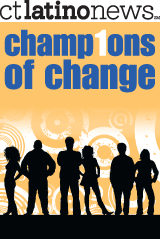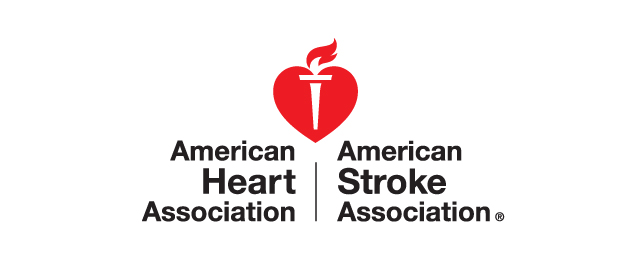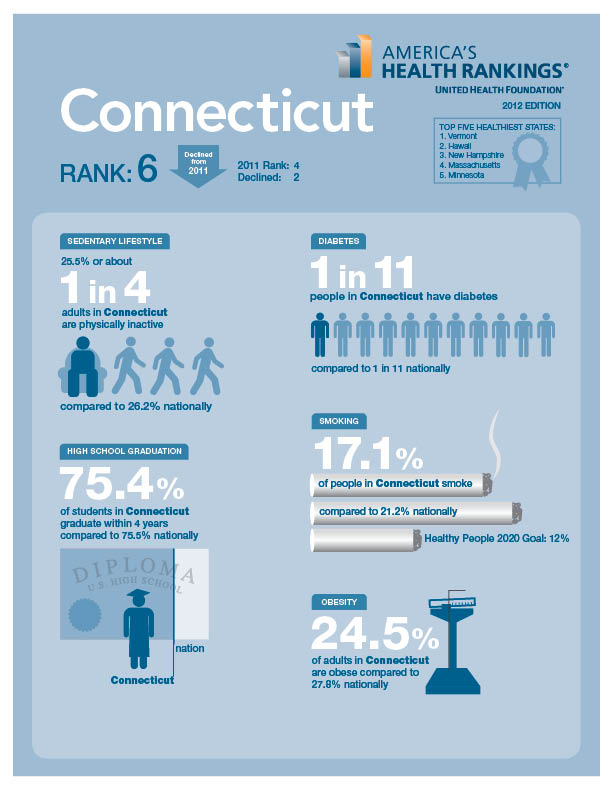Latino Community’s “Champions of Change” Have Leading Roles in 2013
/Looking to 2013 as a year when “we can all increase our efforts to work together to affect change in so many arenas,” the website ctlatinonews.com has named five “Champions of Change” in the Latino community. The individuals “have accomplished change through various means, some through their professional work, others by generously volunteering their time, working for change through policy implementation or by using the legal system,” according to the website. They were selected by the new site’s editorial team and represent many sectors that include: health, business, politics, media, art and law. In addition, ctlatinonews.com also selected Five Young Latinos already making a difference, Five Non-profit Organizations, Five Latinos in Media & Arts and the Most Visible Latino.
Connecticut’s top five Latino “Champions of Change” as selected by ctlatinonews.com are John Soto, Frances Padilla, Yvette Meléndez, Andres Ayala, and Beatriz Gutierrez.
Frances Padilla: Through her life-long personal commitment and volunteer work, and as well as being one of the state’s leading health reform advocates, Frances G. Padilla is impacting quality of life for all Connecticut residents. As president of the Universal Health Care Foundation of Connecticut, Frances has provided strategic direction and visionary leadership. She is initiating new partnerships, increasing outreach and deepening civic engagement on one of the most important public policy issues of our time. A graduate of Wesleyan University and Harvard’s Kennedy School of Government, Frances has also given much of her personal time over the years to benefit the state’s Latino community.
Yvette Meléndez: Yvette Meléndez had held several executive positions in key organizations where she has been able to affect policy change. She is currently the vice president, Government and Community Alliances, for Hartford Hospital. Prior to this post she served as chief of staff for the Connecticut State University System, deputy commissioner at th e Department of Public Health and Addiction Services, and at the State Department of Education where she launched Connecticut’s entry into the charter school movement.She also serves as vice chair of the Board of Regents for Higher Education, and as vice chair of the Hartford Foundation for Public Giving.
e Department of Public Health and Addiction Services, and at the State Department of Education where she launched Connecticut’s entry into the charter school movement.She also serves as vice chair of the Board of Regents for Higher Education, and as vice chair of the Hartford Foundation for Public Giving.
Andres Ayala, Jr.: Born in Bridgeport, newly elected state Senator Andres Ayala Jr. is a champion of change in the political arena as well as through his role as a community leader, where he has spent his career building opportunities and opening doors for others. He was elected in November 2012 to represent the 23rd Senatorial District, the first Democrat Latino Senator in Connecticut history. He previously served three terms as state representative for the 128th district. Ayala’s political life began on the Bridgeport City Council, where he rose to City Council president – the first Latino ever to do so. He worked to develop Bridgeport’s school building plan, which created five new schools. He is an educator in the Bridgeport school system, and has worked as a teacher, dean of students and advisor to the Aspira Youth Development Program.
Beatriz Gutierrez: Beatriz Gutierrez is helping to change the future of Connecticut by making it more of a global player in the marketplace in her role as head of the Department of Economic and Community Development’s international business development efforts. She brings a unique perspective as a Latina with a strong business background and knowledge of the world. Born in the United States to Colombian parents, and raised in Colombia, Gutierrez returned to the U.S. to study electrical engineering at Marquette University in Milwaukee, graduating in 1990. Gutierrez’ office at DECD is currently developing a strategic plan for Connecticut to compete in international markets.
John Soto: The owner of Space-Craft Manufacturing in New Haven, John Soto has used his business acumen and wealth for social and economic change through philanthropy. Born in Puerto Rico, he started his company 42 years ago with four employees and today Space-Craft Manufacturing is now recognized as an industry leader, Soto has personally donated hundreds of thousands of dollars over the years and devoted countless hours of his time to Latino related organizations, especially those whose mission is helping Connecticut’s youth.


 (CDC):
(CDC):

 volunteered through an organization, an increase of 1.5 million from 2010. Americans volunteered a total of almost 8 billion hours, an estimated economic value of roughly $171 billion. A majority of Americans assisted their neighbors in some way and more than a third actively participated in a civic, religious, or school group.
volunteered through an organization, an increase of 1.5 million from 2010. Americans volunteered a total of almost 8 billion hours, an estimated economic value of roughly $171 billion. A majority of Americans assisted their neighbors in some way and more than a third actively participated in a civic, religious, or school group. ho made the ultimate sacrifice. The Education Center will tell the stories of those who served and died in Vietnam through programming that will include interactive exhibits, primary source information, and educational programs.
ho made the ultimate sacrifice. The Education Center will tell the stories of those who served and died in Vietnam through programming that will include interactive exhibits, primary source information, and educational programs.
 of Market and State Streets just a block from the University of Connecticut School of Business
of Market and State Streets just a block from the University of Connecticut School of Business 


 e 2012 Democracy Cup for voter turnout are Granby (86.22%) and Stamford (71.6%).
e 2012 Democracy Cup for voter turnout are Granby (86.22%) and Stamford (71.6%).

























